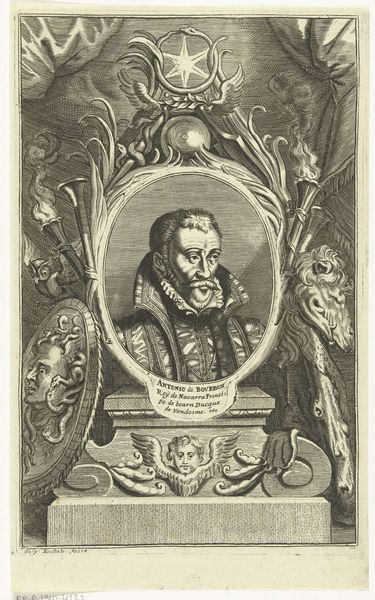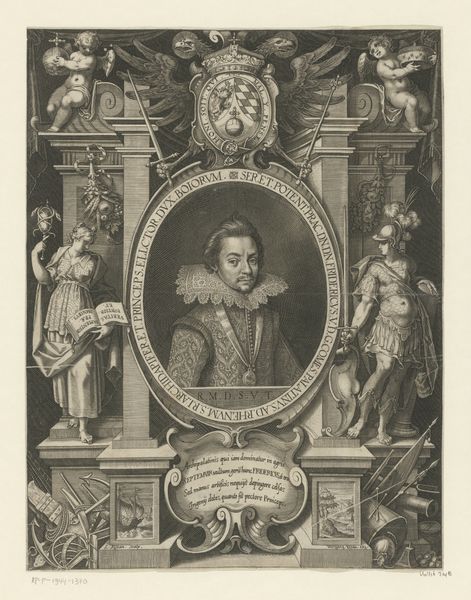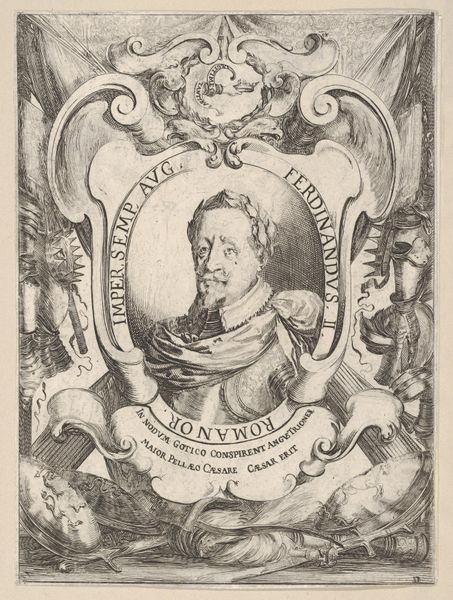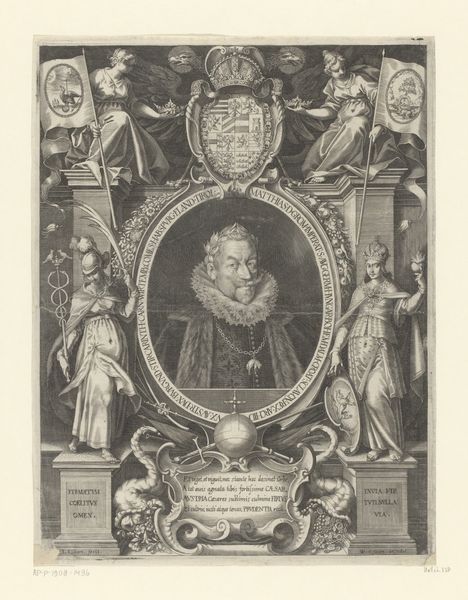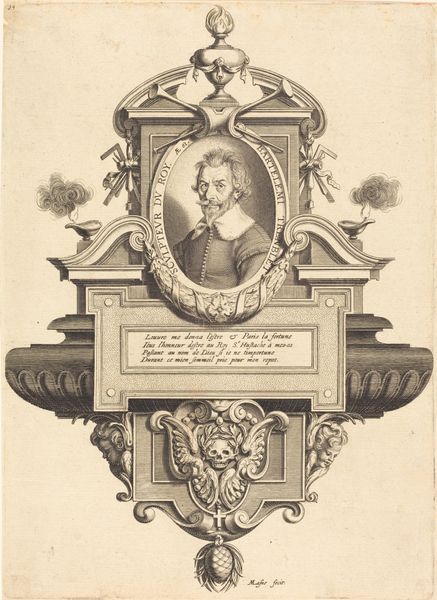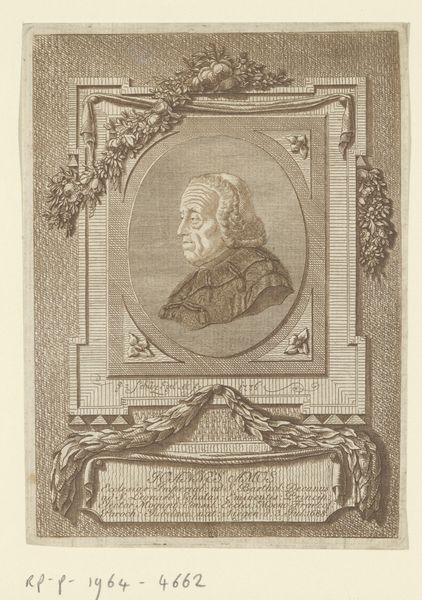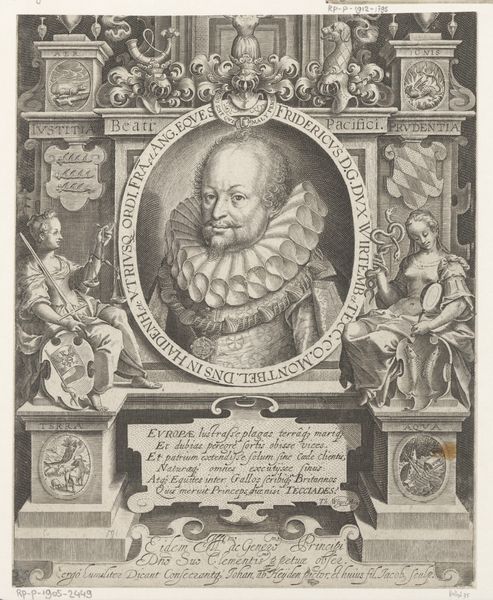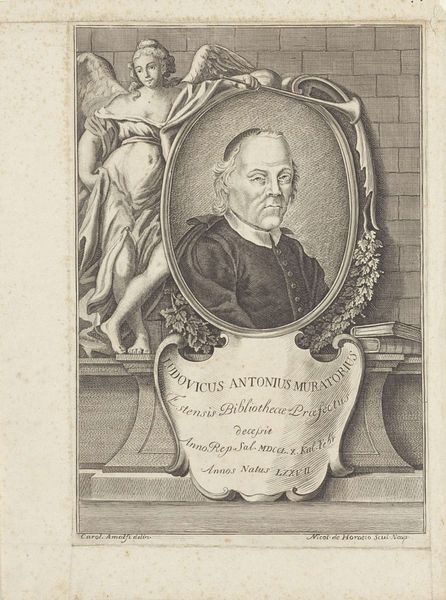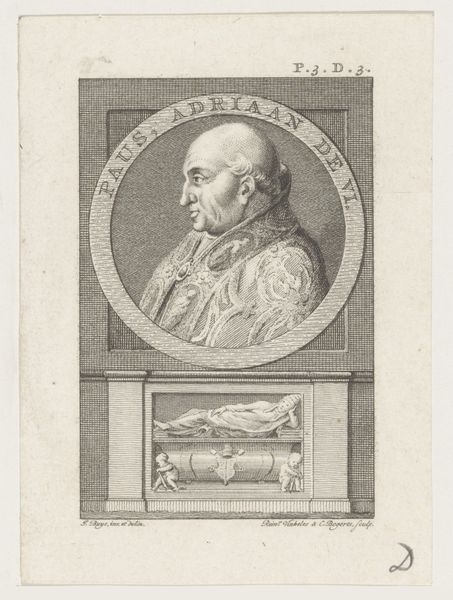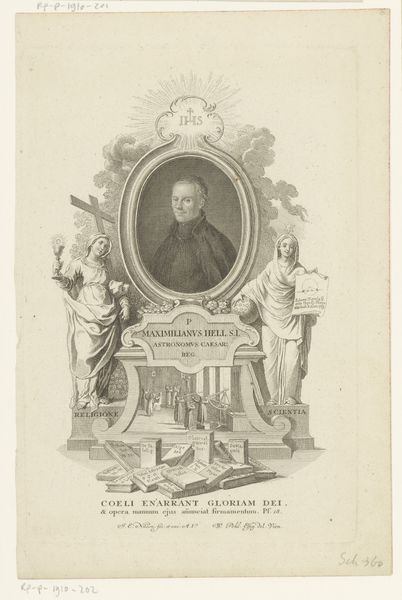
Portret van Franz Wilhelm, de bisschop van Osnabrück in een galerij 1631
0:00
0:00
engraving
#
portrait
#
baroque
#
old engraving style
#
caricature
#
engraving
Dimensions: height 332 mm, width 208 mm
Copyright: Rijks Museum: Open Domain
Lucas Kilian made this print of Franz Wilhelm, the bishop of Osnabrück, in 1615. It's an engraving, meaning that the image was incised into a metal plate, probably copper, and then printed. Consider the sheer labor involved, the artist painstakingly carving lines into the resistant metal, using specialized tools to create the image in reverse. The quality of the line is crucial, as it defines form, texture, and tone. Look at the incredible details of the Bishop's face, costume, and the surrounding architectural framework. The print is not just an image, but an object made through a complex process. This kind of graphic was at the intersection of art, craft, and commerce, circulating images and ideas in a rapidly changing world. Appreciating the skill and work that went into it helps us understand its cultural value.
Comments
No comments
Be the first to comment and join the conversation on the ultimate creative platform.
